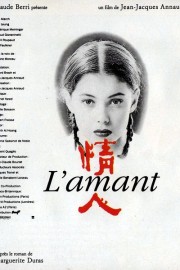The Lover
When I was thinking of a movie to review on the cusp of the release of “Fifty Shades of Grey,” the first one that popped into my mind was Jean-Jacques Annaud’s “The Lover.” Like the upcoming film, it’s based on a best-selling novel about an affair between a young, virginal girl and a wealthy older man that is taboo in the society in which it takes place. The big difference, however, is that “The Lover” is based on the true story of it’s author, Marguerite Duras. There are more differences, of course, but that one alone makes “The Lover” more than just the gauzy, soft core piece of erotica it looks like.
The film takes place in French colonial Vietnam in 1929, and it follows The Young Girl (all we know the character played by Jane March as) as she moves to the area with her poor family, and unhappily goes to an all-girls school. One day, she meets The Chinaman (as Tony Leung’s character is known) on a ferry, and they have a connection. Something about the other draws these two together. She tells him she is 18, but we know she is lying. One day, he has a car waiting outside her school, ready to take her to a poor part of town, and a secluded room, where they make love. The Chinaman resists, at first, but The Young Girl lets him know it is alright. Their courtship continues, but they know that because of their ages, races, and class, a future is impossible, so they try to simply live in the moment of their own passion for one another.
This is a film with genuinely erotic scenes between March (who would later star in another erotic drama, “Color of Night,” with Bruce Willis) and Leung (best known for this and “A Better Tomorrow 3”) surrounded by an almost comically melodramatic storyline that feels like a formality much of the time. March was only 18 at the time (she actually turned 18 during production), while Leung was 33, and that disparity makes the film’s sexuality, well staged and choreographed, feel just as illicit as the story it portrays. We don’t quite get full-frontal with both participants (as always, the female form is more represented than the male), but it’s definitely enough to make the viewer blush. The narrative, however, is hard to keep a straight face about, though. Starting with the voiceover by Jeanne Moreau, the film tries to be serious arthouse fare, but instead, it comes off as trying way too hard to distance itself from the sort of soft-core storytelling audiences are used to from a particular type of film. It’s not quite as bad as your average porn film, but the screenplay by Gerard Brach and Annaud (“Seven Years in Tibet,” “Enemy at the Gates”) feels overly flowery in it’s prose, and isn’t nearly deep enough to really look at the issues that keep our lovers apart. There is some wonderful production value in the art direction, cinematography (by Robert Fraisse) and score (by Gabriel Yared), and March and Leung do what they can to make us feel the pull between these characters; unfortunately, that pull doesn’t extend past the bedroom. Outside of that seclusion, “The Lover” is as inconsequential as a narrative as it’s voiceover is flowery and empty in it’s words.










